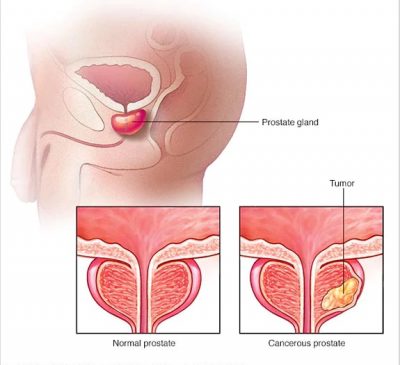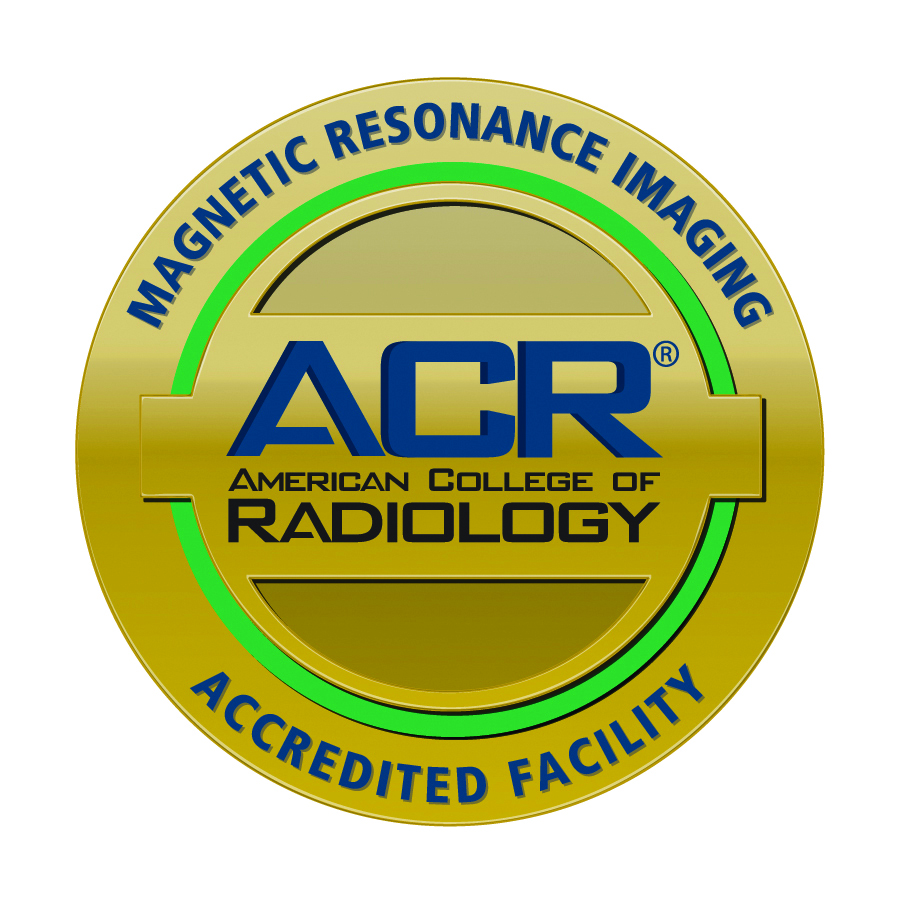 Multi-parametric Prostate MRI provides detailed anatomical and functional information useful in a variety of clinical situations, both before and after prostate biopsy. Imaging sequences gathered in mpMRI can be used to measure the extent of a tumor, identify its location, estimate its Gleason score, and determine whether a tumor has spread beyond the prostate gland.
Multi-parametric Prostate MRI provides detailed anatomical and functional information useful in a variety of clinical situations, both before and after prostate biopsy. Imaging sequences gathered in mpMRI can be used to measure the extent of a tumor, identify its location, estimate its Gleason score, and determine whether a tumor has spread beyond the prostate gland.
mpMRI images are increasingly important in delineating targets and guiding prostate biopsy. In conjunction with a contrast agent, mpMRI can also be used to evaluate blood flow through the prostate. Cancerous tissue absorbs the contrast agent more quickly than healthy tissue, which is apparent on the contrast sequences. This can help to detect small, yet significant cancers missed by non-contrast sequences.
In addition to its use as a diagnostic tool to localize and characterize prostate cancer, mpMRI has emerged as a useful tool for active surveillance of prostate cancer, and may help minimize invasive follow-up.
Identifying and Defining Tumors
Advanced Radiology has two subspecialty-trained, board certified radiologists who interpret mpMRI exams. Our radiologists have extensive experience with mpMRI both in fellowship training and in practice. Our doctors work closely with urologists and other physicians in the community to ensure that our patients receive the most advanced, up-to-date care, including: participation in tumor conferences; 3-D segmentation for specialized, targeted biopsies; and continued follow-up to ensure patients are either treated appropriately or receive active surveillance.
Multi-parametric MRI exams are interpreted according to the Prostate Imaging Reporting and Data System (PI-RADS). This classification system uses a 5-point scale to standardize assessment of exams. A PI-RADS assessment indicates the likelihood of intermediate- and high-risk cancers based on findings from the three mpMRI sequences.
For PI-RADS scores of 4 or 5, patients are typically recommended for biopsy. For results of PI-RADS 1 or 2, a recommendation for biopsy is likely inappropriate, but other factors should be considered. For results of PI-RADS 3, biopsy may be appropriate depending on patient history, patient and physician preferences and preferred standard of care.
Improving Targeted Biopsy
Another benefit of Multi-parametric MRI is that it enables targeted biopsy. mpMRI images can be fused with real-time ultrasound images to guide biopsy needles. These procedures are respectively referred to as MRI-guided biopsy and MRI-TRUS fusion biopsy.
When PI-RADS results are used to triage men for biopsy, both MRI-guided and MRI-TRUS fusion biopsy offer improved higher diagnostic yields with fewer needles.
Preparing for Your MRI
Preparation for an MRI will vary with the specific exam. You will be given preparation instructions when your schedule your exam.
Contrast
Some MRI exams require you to receive an injection of contrast material. You must sign a consent form prior to any contrast injection. The contrast material most commonly used for MRI contains a metal called gadolinium.
Pre-Exam Screening
You will complete a screening questionnaire prior to each MRI to determine your current health status and identify if there is any material present in your body that is not compatible with MRI. Women should always inform their Radiologist or Technologist if there is any possibility that they may be pregnant.
MRI and Metal
Jewelry and other accessories should be left at home. Because MRI uses a powerful magnetic field, electronics and any items containing metal are NOT ALLOWED in the exam room. In addition to affecting MRI images, these objects may cause you and/or others harm. These items include:
- Jewelry, body piercings, watches, credit cards
- Pins, hairpins, zippers, and similar metallic items
- Glasses, hearing aids, and removable dental work
You should tell your Technologist if you have any medical or electronic devices in your body. You will be required to provide the make and model number of any implanted device.
Patients with the following implants CANNOT BE SCANNED and SHOULD NOT ENTER the MRI scanning area:
- Cochlear (ear) implant
- Some types of clips used for brain aneurysms
- Cardiac defibrillators and pacemakers
You should notify your Radiologist or Technologist of any other metal that may be present in your body due to your occupation or prior accidents. Foreign bodies near, and especially lodged in the eyes are particularly important because they may move during the scan, and may cause blindness. Tooth fillings and braces are not usually affected by the magnetic field, but they may distort images of the facial area or brain, so please inform your Radiologist or Technologist of those as well. If there is any question regarding the presence of metal or an implanted device, an x-ray will be taken to detect and identify any metal objects.
What Will I Experience During and After My MRI?
MRI exams are typically painless. However, some patients may find it uncomfortable to remain still during imaging. Others experience claustrophobia while in the MRI scanner. If you are claustrophobic, you should speak with your referring physician about prescribing anxiety medication.
After you have been thoroughly screened for safety, you will change into a gown before being brought to the MRI room. The Technologist will position you on the moveable exam table. Bolsters and straps may be used to help you maintain the necessary position during imaging. If your physician has asked for images with contrast, an intravenous line will be inserted into a vein in your hand or arm. Coils capable of sending and receiving radio waves may be placed around or adjacent to the area of the body to be studied. Once in position, the exam table will be moved into the magnet.
The Technologist will operate the MRI from a separate control room, and will be able to see, hear and speak with you at all times using a two-way intercom. You will be visible to your Technologist at all times. You may feel slightly warm during your exam. This is normal. If it bothers you, please notify your Technologist. It is important that you remain still while the images are being obtained, which will typically be only a few minutes. When images are being recorded you will hear and feel loud tapping or thumping sounds. You will be given earplugs or headphones to dampen the sounds. You may be able to relax between imaging sequences, but will be asked to maintain the necessary position as much as possible.
MRI exams generally include multiple imaging sequences, some of which may last several minutes. If contrast material is used, it will be injected into the IV line after an initial series of scans is done without contrast.
When the exam is complete, the Technologist will check the images to determine if additional imaging is necessary. The exam table will move out of the magnet, and any coils or IV lines will be removed. Depending on the type of exam, imaging will be completed in approximately 30 minutes. You may resume normal activities and diet immediately after your exam.
Benefits of mpMRI
- Researchers have produced convincing evidence that mpMRI could aid prostate cancer screening and diagnosis, with the most prominent benefit being higher diagnostic yields with fewer needles.
- This reduces harms associated with biopsy, decreases the chance of identifying low-risk cancers, and increases detection of intermediate- and high-risk cancers. Once a diagnosis of prostate cancer has been confirmed, mpMRI can continue to play a role in patient management.
- Detailed anatomic and functional information provided by mpMRI can help to guide treatment decisions.
- USPSTF recommendations against screening and uncertainty surrounding prostate cancer diagnoses have led many men to fear screening more than they fear the disease itself. Prostate cancer kills more men than any other cancer except lung cancer. With more than one million biopsies performed each year, men deserve a screening model that can better identify those who would benefit from biopsy and offer high diagnostic accuracy. Multi-parametric MRI as an adjunct to PSA allows us to better identify candidates for biopsy, as well as differentiate those who require treatment from those who can be safely monitored. One of the greatest benefits of mpMRI is its ability to help men more confidently choose active surveillance as a management strategy rather than radical therapy.
Multi-parametric MRI can be adequately performed with either 1.5T or 3T MRI. However, mpMRI with a 3T magnet produces images of higher quality. Evidence suggests that mpMRI is ideally performed with 3T MRI and results interpreted by radiologists with significant experience reading Multi-parametric MRI.
If you have any additional questions regarding your exam,
please call 203.337.XRAY (9729).
If you would like to schedule an appointment, click here.
MRI exams are available at the following Advanced Radiology locations
HIGH FIELD WIDE-BORE MRI:
Fairfield – 1055 Post Road
Orange – 297 Boston Post Road
Stamford – 1259 E Main Street
Wilton – 60 Danbury Road

